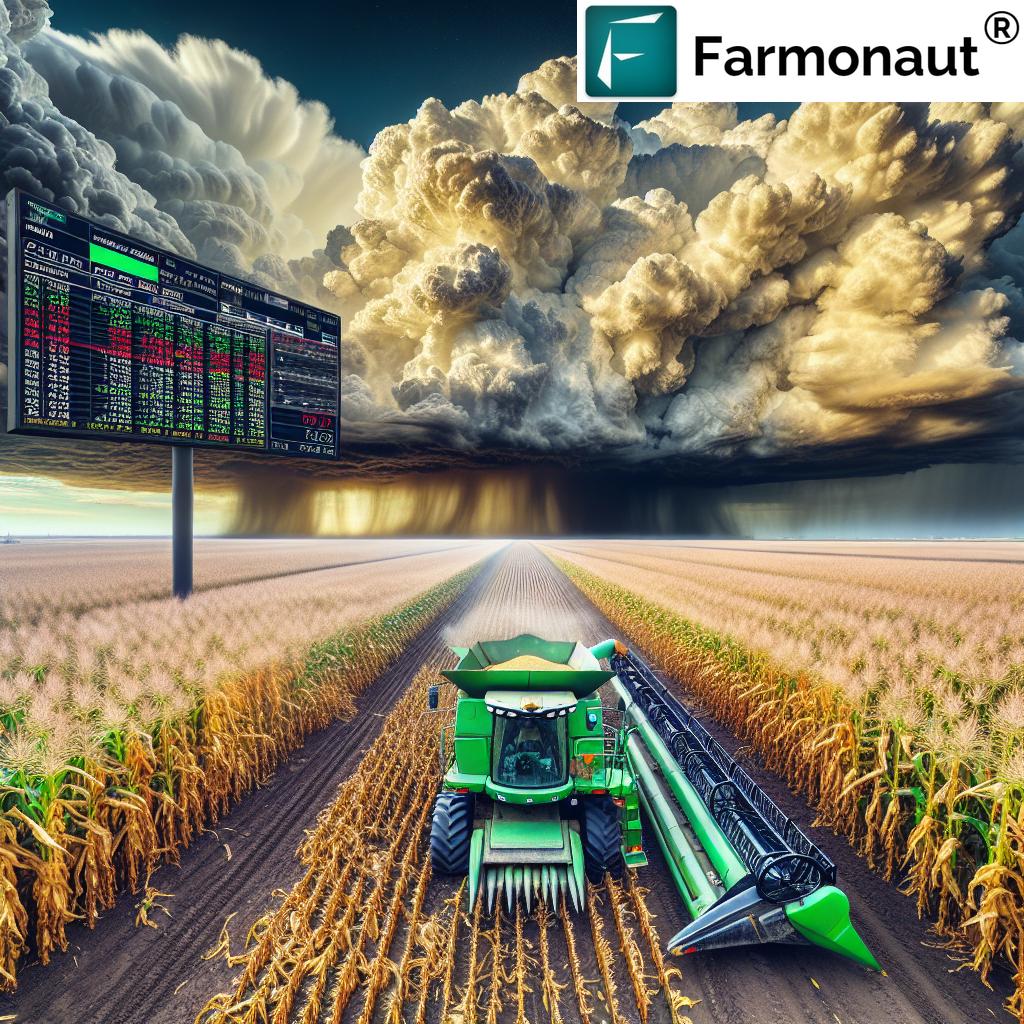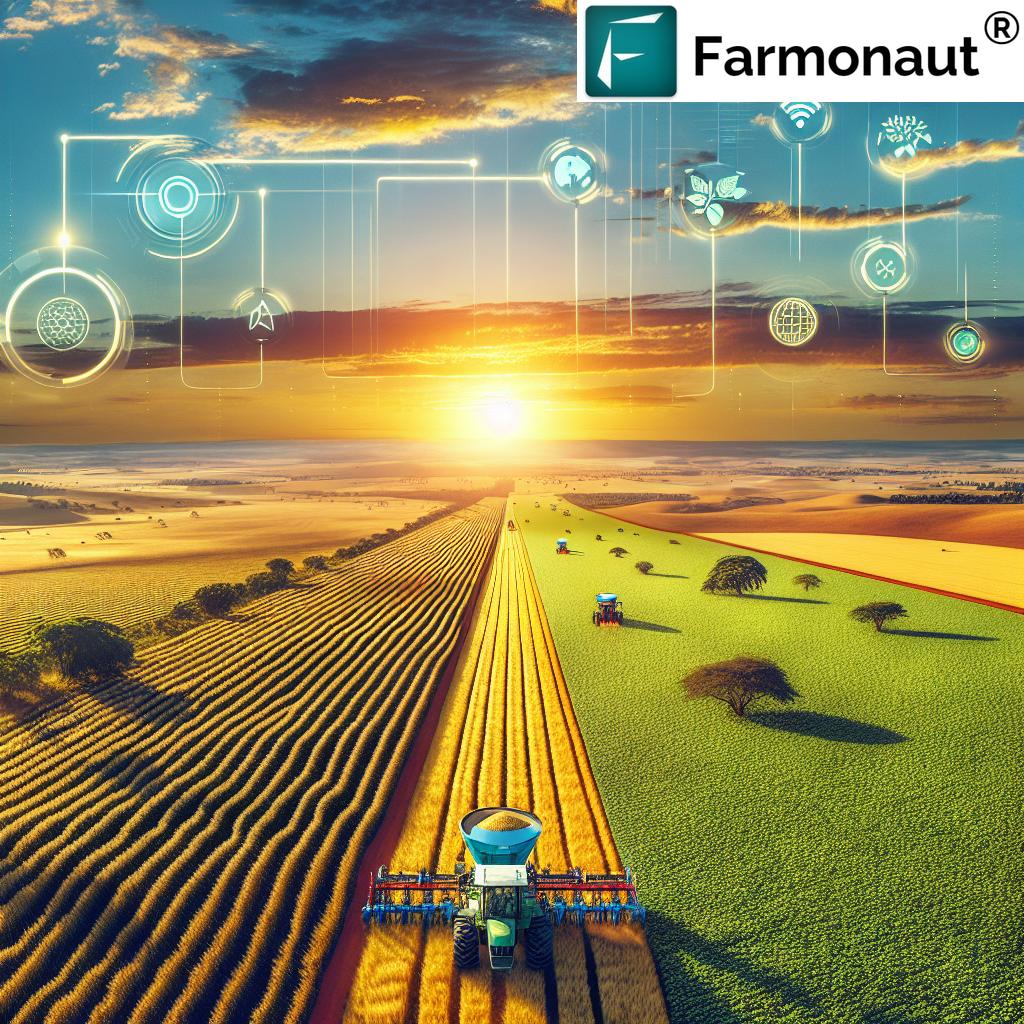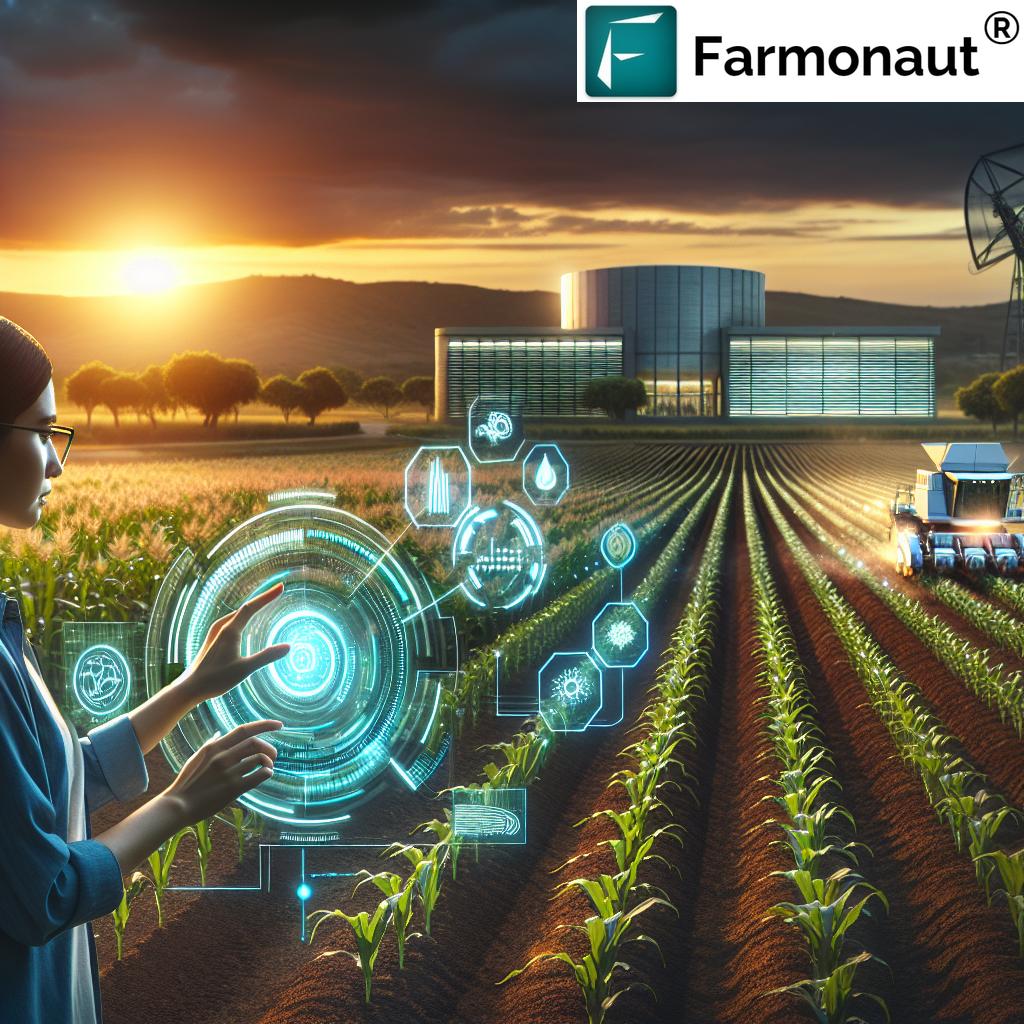Agriculture in Mexico & NM: 2025 Industry Trends
Meta Description: Explore the dynamic agriculture in Mexico for 2025—discover key trends, sustainable practices, industry challenges, innovative techniques, and future prospects impacting Mexican farmers and global trade.
Table of Contents
- Introduction: The Cornerstone of Economy and Heritage
- Industry Overview: Agricultural Diversity and Regional Output
- Trivia Spotlight: 2025 Export and Sustainability Milestones
- 2025 Agriculture Trends in Mexico & New Mexico
- Facing Climate Change: Challenges and Adaptation
- Technology & Innovation: Digital and Precision Agriculture
- Sustainable Agricultural Practices: The Shift Toward Environmental Responsibility
- Infrastructure, Irrigation, and Water Management in 2025
- Livestock Sector Highlights: From Production to Sustainability
- Agricultural Trade, Global Markets & Quality Standards
- Smallholder Farmers, Rural Development, and Inclusion
- Indigenous Agriculture: Heritage, Diversity, and Modernization
- Future Prospects: Sustainable Growth and Food Security
- Comparative Trends Overview Table: Mexico Agriculture 2025
- Farmonaut: Satellite Solutions Empowering Mexican Agriculture
- FAQ: Agriculture in Mexico & NM 2025
- Conclusion: Agricultural Evolution at the Crossroads
“By 2025, Mexico’s agricultural exports are projected to surpass $50 billion, driven by increased demand for avocados and berries.”
Introduction: The Cornerstone of Economy and Heritage
Agriculture in Mexico has always been foundational to the nation’s economy and cultural heritage, shaping livelihoods, ensuring food security, and driving trade both domestically and internationally. In 2025, amid complex challenges and exciting new prospects, Mexican agriculture continues to evolve, combining age-old traditions with cutting-edge technology and sustainable practices.
As we look at agriculture in Mexico and New Mexico, industry leaders, farmers, policy makers, and innovators are joining forces to conquer emerging threats like climate change, resource limitations, and global market volatility. In parallel, advancements in precision farming, satellite analytics, and institutional support are transforming the sector at every level—from vast commercial farms in Sinaloa, Jalisco, or Michoacán to family-owned plots in the tropical south.
This comprehensive industry review provides insights into the current trends, strategic developments, and the bright future awaiting Mexican agriculture in 2025 and beyond.
Industry Overview: Agricultural Diversity and Regional Output
The agriculture industry in Mexico is both vast and diverse, encompassing a broad range of crop cultivation and livestock production. The country’s varied geography—from arid northern deserts to tropical southern lowlands—enables a diverse selection of grains, fruits, vegetables, cash crops such as coffee, sugarcane, and avocados.
- Sinaloa: Mexico’s breadbasket, leading in wheat, corn, tomatoes (supported by vast irrigation infrastructure).
- Jalisco: Dominant in avocados, eggs, and livestock; also major dairy hub.
- Michoacán: Capitoline of avocado production and vibrant fruit/vegetable output.
- Veracruz: Renowned for coffee, sugarcane, tropical fruits, and beef cattle.
The north (e.g., Sinaloa, Sonora) benefits from advanced irrigated systems, while the south remains reliant on rainfed agriculture, facing unique challenges but harboring considerable biodiversity and unique cultural practices.
Key Sectors and Products:
- Grains: Corn, wheat, sorghum, rice
- Fruits & Vegetables: Avocados, berries, tomatoes, citrus, mangoes, chiles
- Livestock: Cattle, pork, poultry, dairy
- Export Crops: Coffee, sugarcane, nuts, flowers
This broad base makes Mexican agriculture a vital supply chain hub for North America, Europe, and global markets.
2025 Agriculture Trends in Mexico & New Mexico
2025 marks a pivotal year for agriculture in Mexico and the broader agricultural sector in New Mexico, shaped by:
- Sustainable Intensification: Over 60% of Mexican farmers are set to adopt sustainable water-saving techniques and low-input practices. This is driven by climate conditions and the need for environmental stewardship.
- Technological Integration: A surge in the use of satellite imagery, drones, digital apps, and AI-powered advisory services to monitor crop health, optimize irrigation, and boost yields.
- Crop Diversification: Expansion beyond staples like corn and wheat towards high-value fruit, vegetable, and “superfood” crops, strengthening international competitiveness.
- Advanced Resource Management: Focus on improving soil health, integrating agroecological practices, and deploying water-saving irrigation structures.
- Policy and Market Dynamics: Growing compliance with global standards, digital traceability, and sustainable certifications to retain market share and meet export demand.
The focus remains clear: increase agricultural productivity, minimize risk, build resilience, and maintain food security amid volatile climate and market dynamics.
Facing Climate Change: Challenges and Adaptation
Climate change remains the most significant challenge facing the agriculture in Mexico today. Rising temperatures, extended droughts, and increasingly erratic rainfall patterns pose threats to both rain-fed and irrigated farming systems, particularly impacting the southern rain-fed states.

- Increasing Temperatures: Heat stress threatens crop yields and animal productivity.
- Prolonged Droughts: Critical for irrigated agriculture in northern and central regions; exacerbates water scarcity.
- Shifting Rainfall Patterns: Unpredictable, affecting sowing, germination, and harvest cycles.
Responses and Solutions:
- Targeted research into drought-resistant crop varieties.
- Investment in water-saving technology: precision irrigation, sensor-driven scheduling.
- Promotion of agroforestry and agroecology for better soil health and microclimate moderation.
- Greater diversification strategies to reduce economic risk, securing both staple and emerging crop systems.
“Over 60% of Mexican farmers are expected to adopt sustainable water-saving techniques by 2025 to combat climate challenges.”
Technology & Innovation in Agriculture in Mexico 2025
Digital agriculture is revolutionizing Mexican farming by boosting efficiency and productivity. Strategic integration of satellite imagery, AI-based recommendations, and drones is enabling real-time data-driven decisions for both large commercial farms and smallholder producers.
-
Satellite Technology: Satellite-driven precision agriculture provides detailed insights into vegetation health (NDVI), soil conditions, and crop growth trends. It helps farmers monitor fields remotely, pinpoint problem areas, optimize fertilizer and water use, and minimize losses from pests or disease outbreaks.
Related Product: For those seeking real-time, field-level environmental monitoring or carbon footprint tracking, Farmonaut’s Carbon Footprinting solution is tailored to optimize sustainability and reduce regulatory compliance risks. - Drones & AI: Drones supplement satellite data with ultra-close surveys, while AI analyzes these feeds to provide tailored recommendations to farmers (e.g., optimal spray timing, early pest alerts).
- Mobile/Cloud Apps: Digital apps have made it easier than ever for farmers to access weather forecasts, satellite updates, market prices, and agronomic guidance.
-
Blockchain-based Traceability: Ensures food authenticity, process transparency, and traceability for both domestic and international trade—meeting global buyer requirements.
Explore: Maximize export value and retain consumer trust with Farmonaut’s Traceability solutions for agriculture. Perfect for producers aiming to earn premium certifications for international markets.
Sustainable Agricultural Practices: The Shift Toward Environmental Responsibility
The push toward sustainable agriculture has gained enormous traction, shaped by both climate imperatives and global market demand. Leading 2025 trends include:
- Water Conservation: Modern irrigation systems—from drip to precision sprinkler—reduce water use and ensure adaptability during drought.
- Agroecology and Agroforestry: Techniques that mimic natural ecosystems, promoting soil health, biodiversity conservation, and suppression of pests without over-reliance on chemicals.
- Regenerative Agriculture: Focusing on building carbon-rich soils, rotating crops, integrating livestock, and limiting tillage. These strategies restore soil fertility, boost yields, and increase resilience to severe weather events.
- Reduced Input Use: Smart use (or reduction) of fertilizers and crop protection products, instead prioritizing organic and biological solutions.
These practices not only conserve resources for long-term productivity but are critical for protecting ecosystem services that Mexican agriculture depends on.
Infrastructure, Irrigation, and Water Management in 2025
Efficient irrigation infrastructure and water management remain pivotal in the north (Sinaloa, Sonora) and increasingly important in the rain-fed southern states.
- Precision Irrigation: Automated drip and sensor-linked systems adjust water delivery based on soil moisture and remote-weather data.
- Modern Water Infrastructure: Upgrades to dams, canals, and pumping stations ensure more reliable distribution even in drought years.
-
Satellite Soil & Moisture Monitoring: Tools now trigger alerts and recommendations to optimize water use and prevent both over- and under-watering.
Check out: Farmonaut’s (API) delivers high-resolution, real-time satellite data to streamline irrigation scheduling for both large and small farms in Mexico and New Mexico.
Livestock Sector Highlights: From Production to Sustainability
Livestock agriculture—led by cattle, poultry, and swine—remains a core component of the agriculture industry in Mexico. In 2025:
- Veterinary Science: Innovations in animal nutrition, health monitoring, and breed selection increase productivity and reduce disease-related risks to production and trade.
- Biosecurity: Greater focus on disease prevention and response, incorporating proactive surveillance systems, especially key for maintaining export market access.
-
Sustainable Livestock Management: Rising attention to methane reduction and water conservation in ranching and feedlots, as environmental regulations tighten.
Benefit from: With Fleet & Resource Management by Farmonaut, ranchers streamline supply chains and reduce operational costs through precise logistical control.
Agricultural Trade, Global Markets & Quality Standards
Mexico holds its status among global exporters, supplying fresh fruits, vegetables, coffee, and grains—chiefly to the U.S. and Canada. In 2025:
- International Market Compliance: The sector’s growth hinges on constant upgrades in quality assurance, food safety, and traceability to meet stringent standards overseas.
- Digital Traceability & Certification: Organic, fair-trade, and carbon-neutral certifications are more sought after, opening premium markets especially in North America and Europe.
- Global Market Volatility: Mexico faces greater competition and price fluctuation due to changing international priorities and supply chain disruptions.
Explore next: Farmonaut’s Crop Loan & Insurance Verification solutions utilize satellite-based validations so financial institutions and farmers can minimize fraud and improve access to financing.
Smallholder Farmers, Rural Development, and Inclusion
Smallholder farmers constitute a significant segment of the agricultural landscape in Mexico and New Mexico. In 2025:
- Training and Extension Services: Expanded digital platforms and mobile extension programs are making it easier to distribute information about sustainable practices and new technologies.
- Affordable Credit and Inputs: New policies and verification services deliver secure, low-cost financing and supplies to small operations.
- Women’s Empowerment Programs: Gender-inclusive agricultural policies and training initiatives acknowledge and elevate the role of women farmers.
- Cooperatives and Market Access: Farmer cooperatives boost bargaining power and facilitate access to markets for remote producers.
Maximize your farm management: For large coops and administrative users, Farmonaut’s Large-Scale Farm Management Suite consolidates monitoring, reporting, and analytics—supporting transparent, efficient rural development.
Indigenous Agriculture: Heritage, Diversity, and Modernization
In the southern states, such as Chiapas and Oaxaca, indigenous agricultural traditions coexist with cutting-edge modernization efforts, helping to preserve genetic diversity and cultural identity. These areas face unique challenges:
- Infrastructure Deficits: Access to modern supplies, transportation, and digital tools varies widely.
- Land Tenure Issues: Complex land rights systems complicate investment and modernization.
- Climate Vulnerability: Steeper landscape, marginal soils, and rain-fed systems are particularly exposed to shifting weather patterns.
Focused investments by government and civil society programs aim to foster sustainable development, reward biodiversity stewardship, and maintain the critical role of these communities in Mexico’s food system.
Future Prospects: Sustainable Growth and Food Security
With the right blend of investment, policy support, and technological adoption, agriculture in Mexico is poised to bolster food security, rural wealth, and global market presence. Key prospects include:
- Continued Productivity Increases: Widespread adoption of digital agriculture could unlock further yield gains.
- Expansion of Export Volume and Value: With a focus on high-quality, branded, and certified products, Mexico’s competitive edge in fruits, vegetables, and specialty crops will grow.
- Sustainable Resource Management: Water, soil, and land stewardship will enable the sector to thrive even as climate and resource pressures intensify.
In all cases, the ability to harmonize tradition with innovation will be the mark of sector leaders by 2025 and beyond.
Comparative Trends Overview Table: Mexico Agriculture 2025
| Sector | 2024 Estimated Value (USD Bn) | 2025 Projected Value (USD Bn) | Year-on-Year Change (%) | Key 2025 Challenges | Notable Innovations/Practices |
|---|---|---|---|---|---|
| Crop Production (Grains & Staples) | $16.0 | $17.2 | +7.5% | Drought, Climate Volatility, Pest Pressure | Precision Irrigation, Climate-Resilient Varieties |
| Fruits & Vegetables | $22.5 | $25.0 | +11.0% | Export Market Access, Certification Costs | Satellite Monitoring, Blockchain Traceability |
| Livestock & Dairy | $12.3 | $13.1 | +6.5% | Disease Management, GHG Emissions, Water Use | Veterinary AI, Sustainable Feed, Methane Reduction |
| Sustainable Practices (All Sectors) | $6.5 | $8.0 | +23% | Adoption Barriers, Education, Financing | Agroecology, Carbon Tracking, Digital Advisory |
| Total Agricultural Exports | $48.5 | $51.6 | +6.4% | Trade Policy, Quality Standards, Logistics | Digital Certification, AI-Powered Crop Analytics |
Note: These are rounded estimates and reflect trends highlighted by leading industry analysis for 2025.
Farmonaut: Satellite Solutions Empowering Mexican Agriculture 2025
As Mexico’s agriculture industry evolves, we at Farmonaut are committed to making satellite-driven insights accessible and affordable for everyone in the value chain—from smallholders in the southern states to agribusinesses in the north and policy-makers in New Mexico.
- Real-Time Crop Monitoring: Our satellite imagery and NDVI analysis help users optimize inputs and manage variable weather patterns effectively.
- Resource & Fleet Management: Farmonaut offers fleets and resource managers robust digital tools to track machinery, improve logistics, and reduce costs. Explore details on our fleet management page here.
- AI-Driven Advisory & Environmental Impact Tracking: Our AI-based Jeevn System delivers customized tips, while carbon footprint monitoring supports sustainable, climate-smart agriculture.
- Blockchain Traceability: We provide tamper-proof records, proven useful for compliance—especially when exporting premium crops to global markets.
- API Integration & Agri Apps: Farmers, cooperatives, and governments can integrate Farmonaut’s API for seamless data-driven agronomic decisions. Check out our Developer Docs for quick setup.
We ensure our products are scalable, modular, and support the unique needs of Mexico’s diverse agriculture landscape.
Discover Forest Plantation & Advisory: For agroforestry, reforestation, and plantation monitoring—visit our Forest Advisory page.
FAQ: Agriculture in Mexico & NM: 2025 Industry Trends
What are the biggest trends shaping agriculture in Mexico in 2025?
- Adoption of digital and precision technologies (satellite, AI, drones)
- Expansion of sustainable farming practices (agroecology, reduced input, carbon tracking)
- Increased focus on water-saving and climate-resilient systems
- Global export growth, especially in fruits and high-value crops
How are climate challenges being managed by Mexican farmers?
- Switching to drought-resistant crop varieties
- Investing in modern irrigation and precision-water systems
- Adopting soil-building, agroecological strategies that buffer extreme weather
What is the role of technology in boosting productivity?
- Enables real-time monitoring of fields and livestock
- AI-powered recommendations for best planting, fertilizing, harvesting times
- Enhanced digital record-keeping for compliance and traceability
How do international standards affect agriculture in Mexico?
- Require farmers to adhere to stricter food safety, sustainability, and traceability requirements
- Offer greater market access and higher prices for certified products
Where can I find satellite-powered tools or apps for agriculture?
- Farmonaut provides cutting-edge apps for real-time monitoring, advice and management on Android, iOS or web platforms.
Conclusion: Agricultural Evolution at the Crossroads
Agriculture in Mexico stands at a critical intersection of tradition, innovation, and sustainability as we step further into 2025. The sector remains a cornerstone of the nation’s economy and cultural heritage, continually influencing livelihoods, ensuring food security, and powering international trade networks. With growing adoption of technology, robust government policies, and a relentless focus on sustainable management of resources, Mexican agriculture continues to evolve amid unprecedented climate challenges and global market limitations.
By leveraging advancements in satellite-based monitoring, AI-driven advisory, and strategic water-saving techniques, Mexico and New Mexico’s agricultural industries are well-positioned to boost productivity and build prosperity for both rural and urban communities. Attention to socioeconomic inclusion, biodiversity, and quality assurance will further fortify the sector’s prospects beyond 2025, cementing Mexico’s vital role in feeding the world.
For enhanced monitoring, resource management, and digital innovation in agriculture or forestry, visit Farmonaut’s platform—you’re only one click away from the future of precision agriculture.













